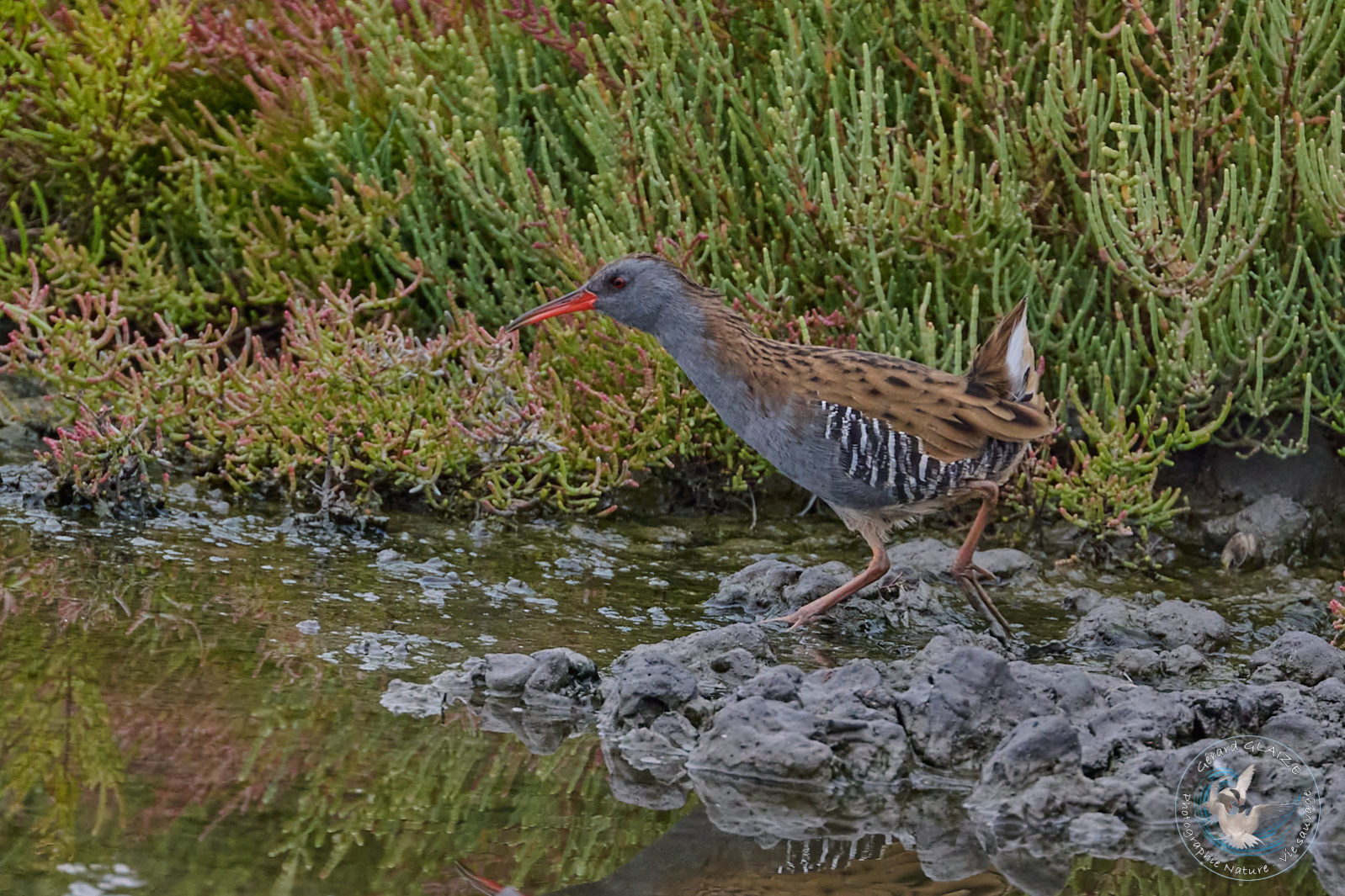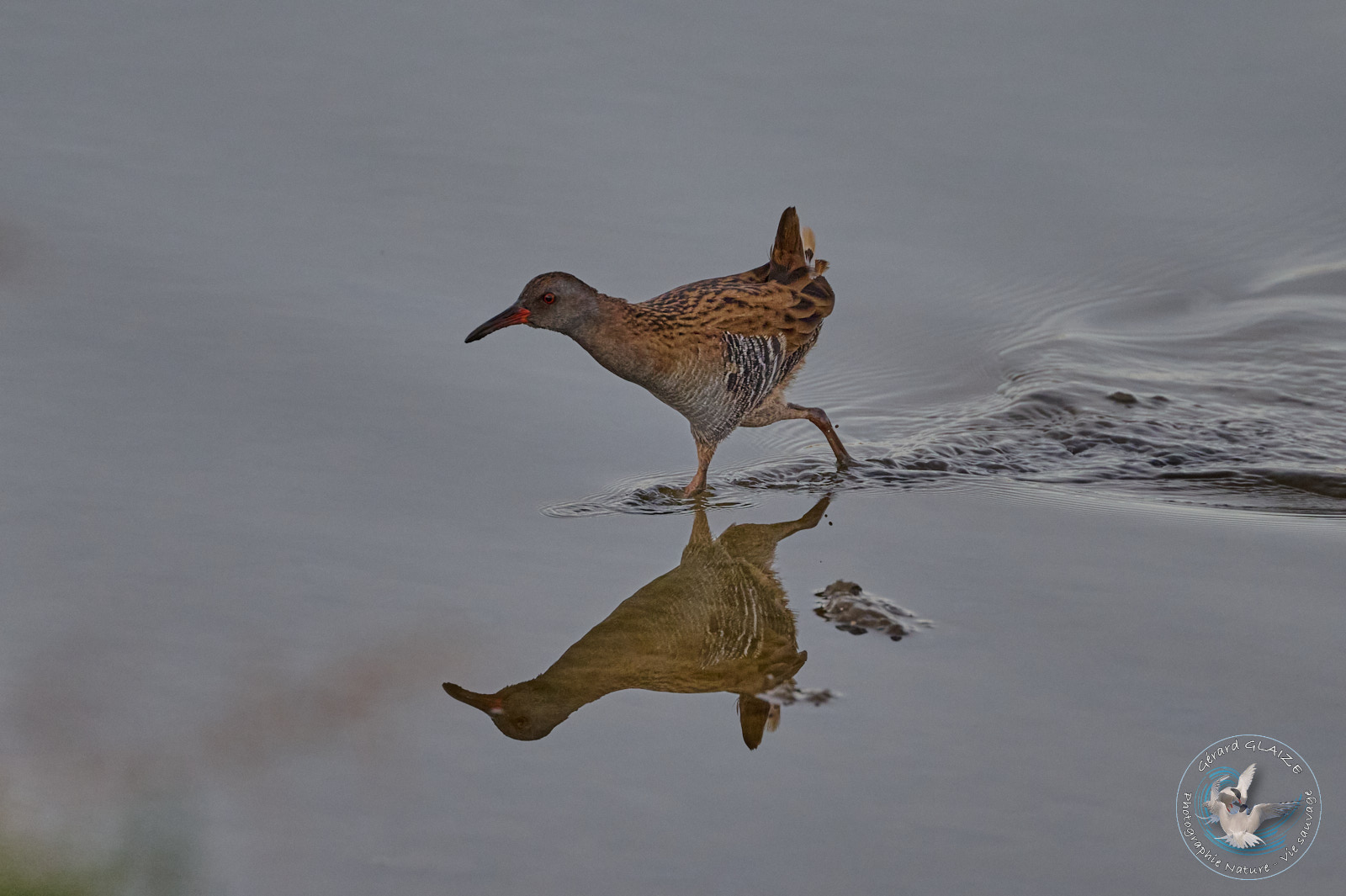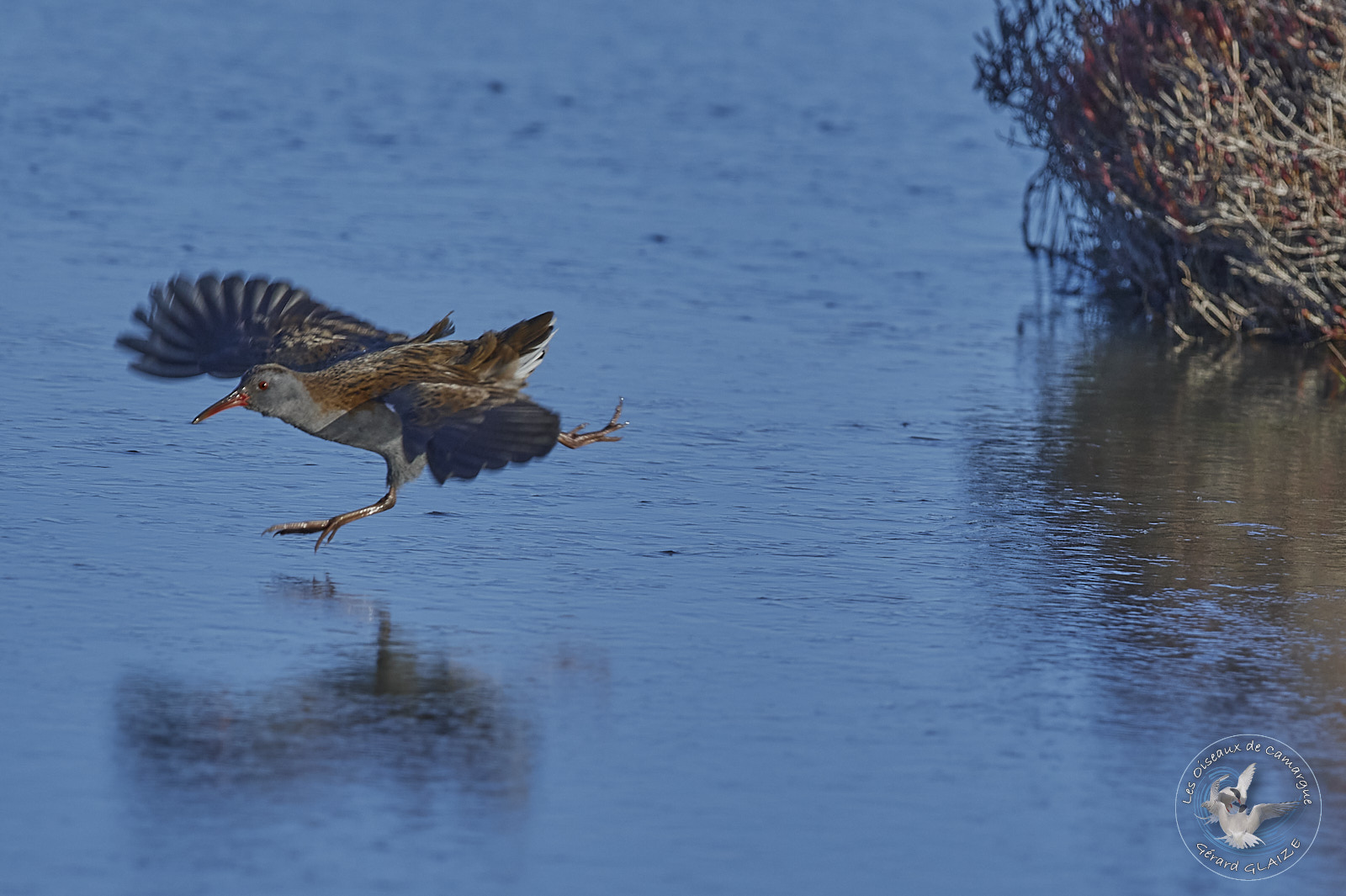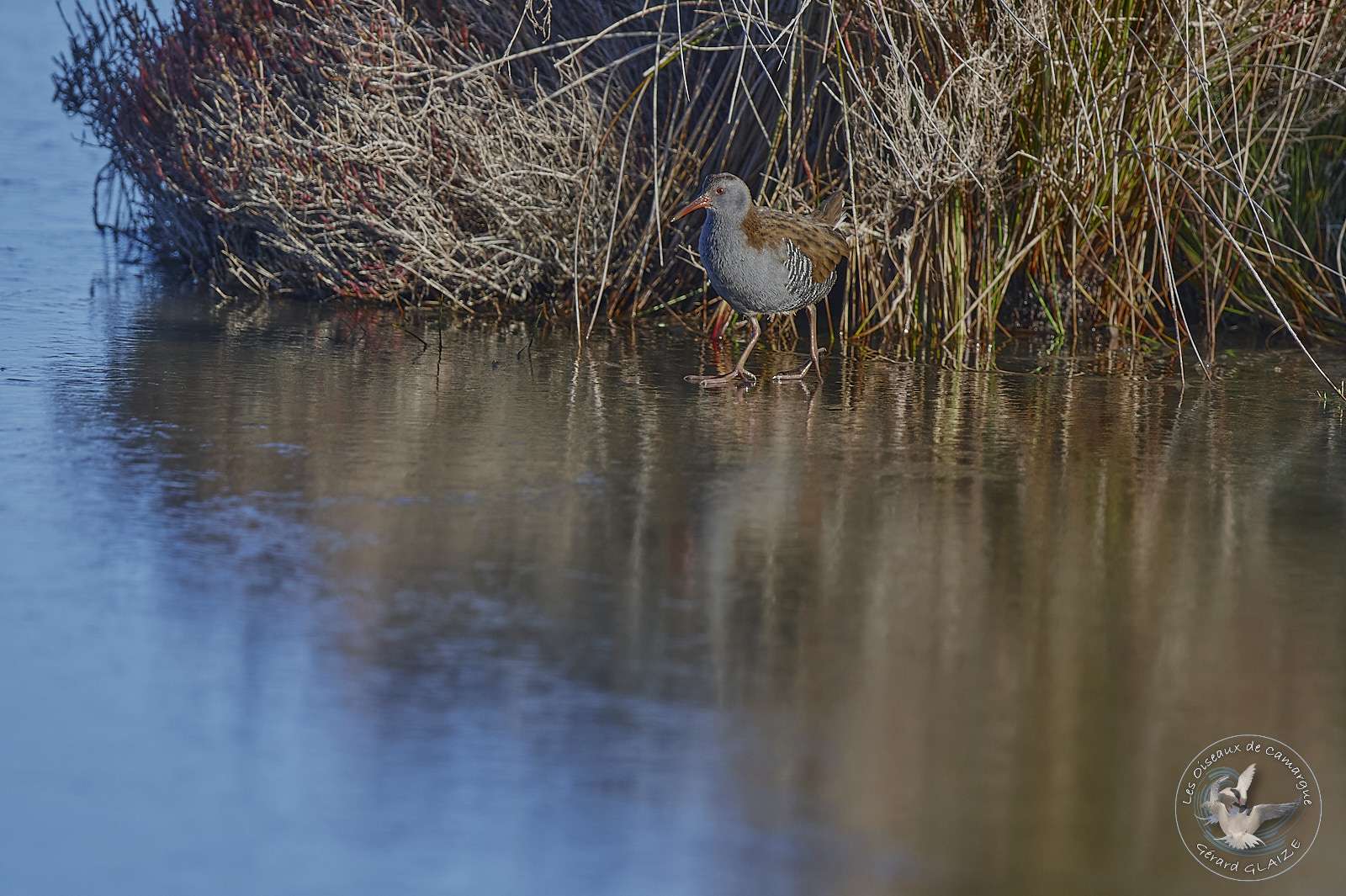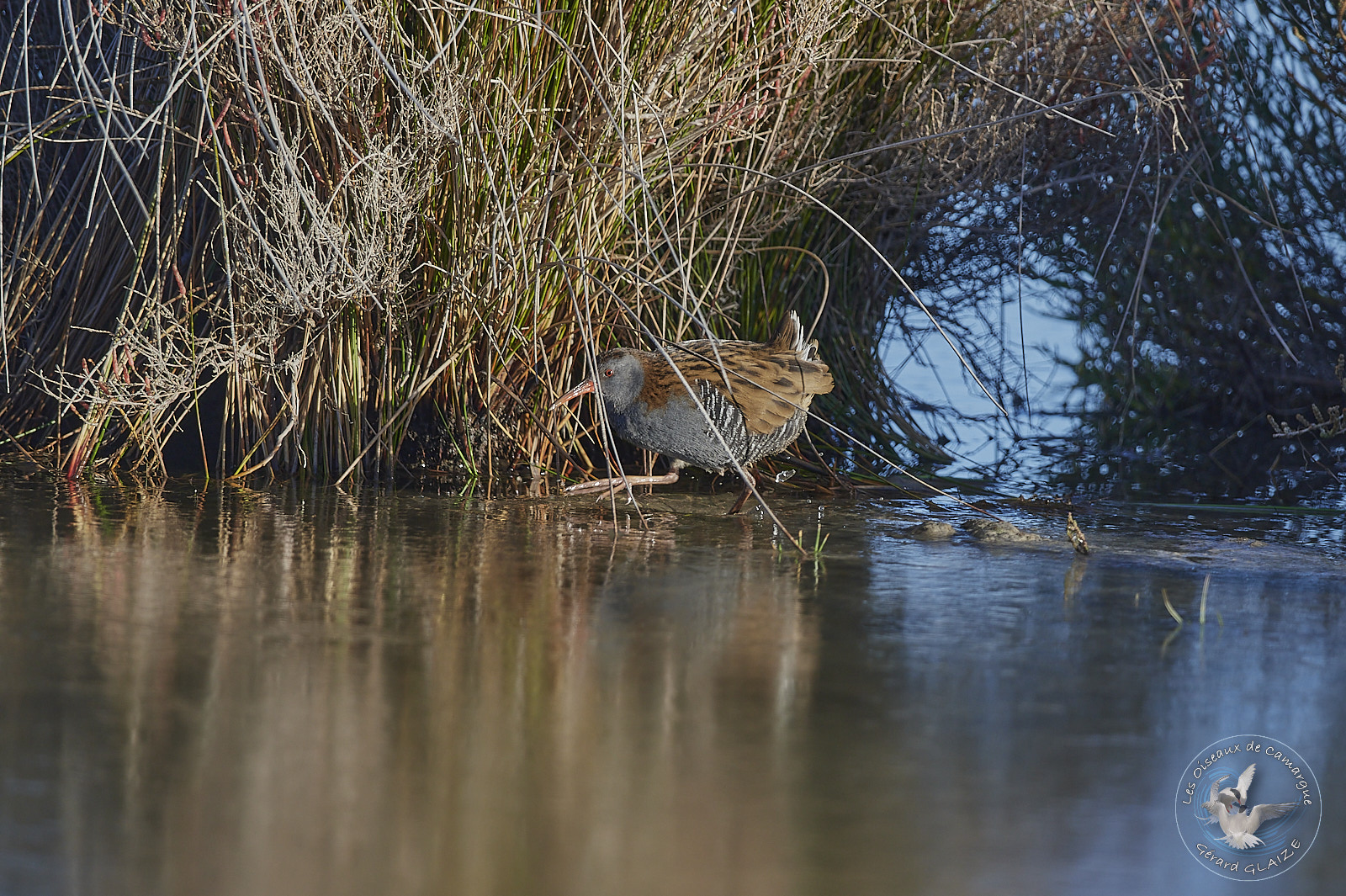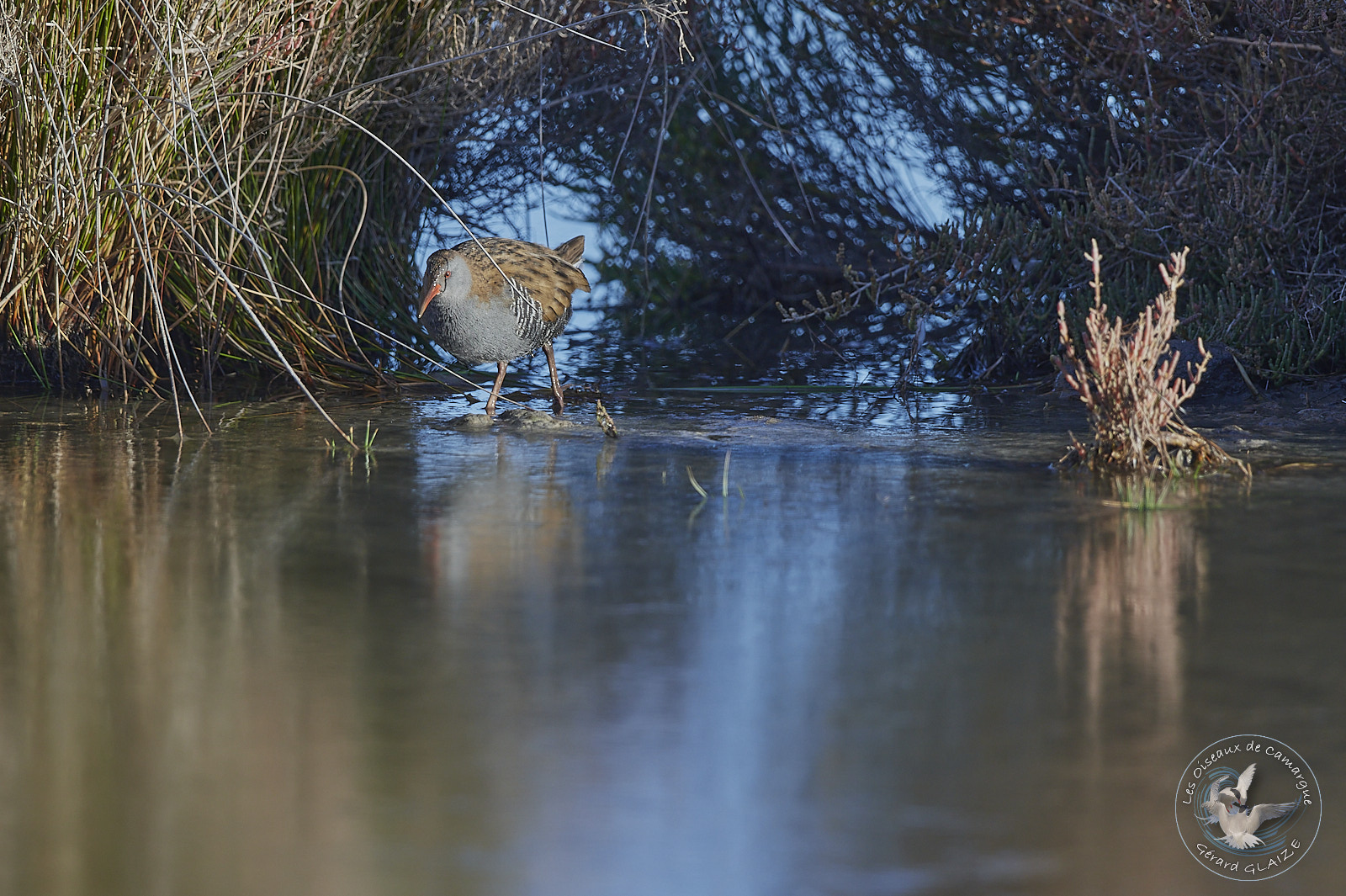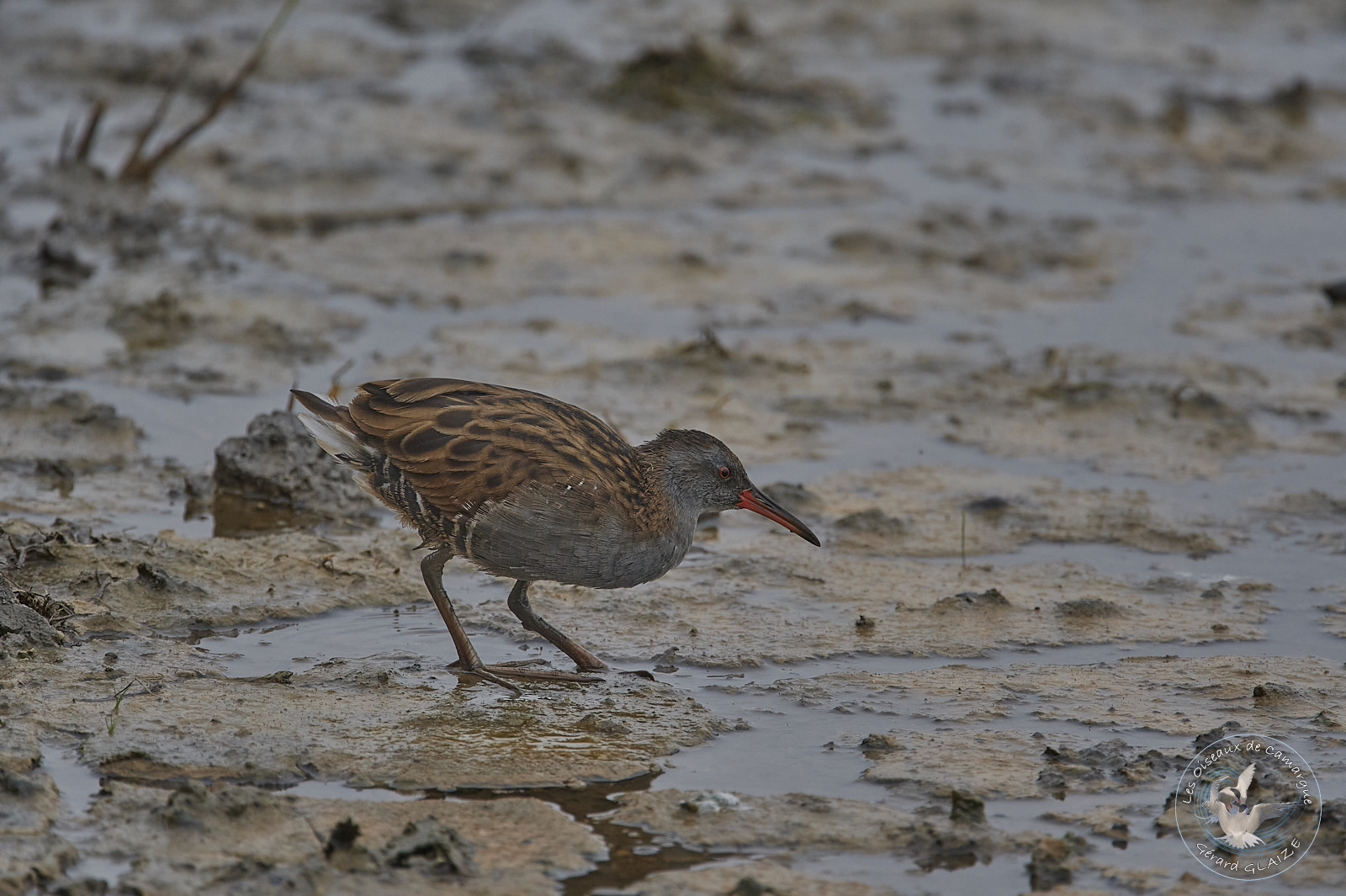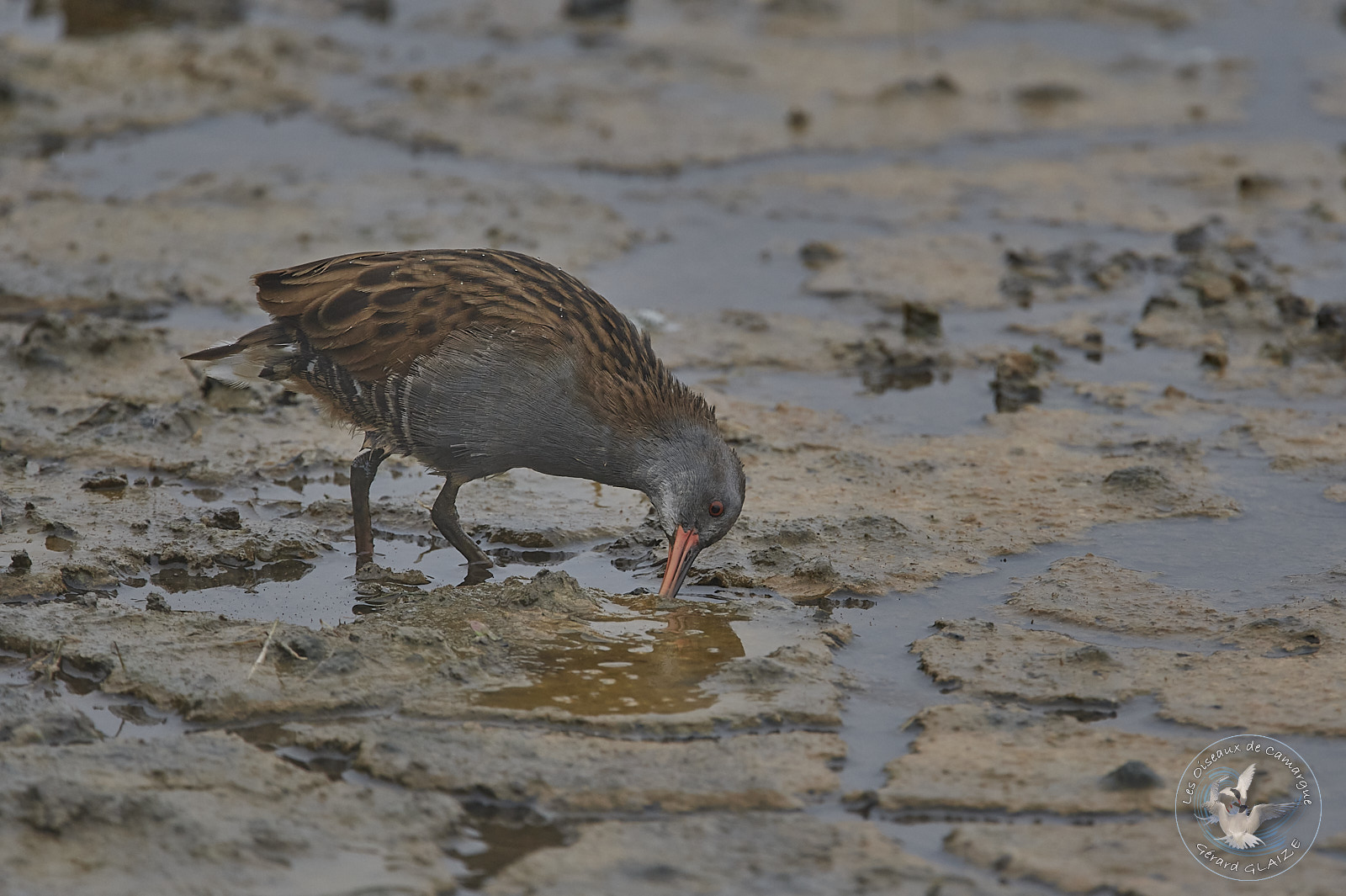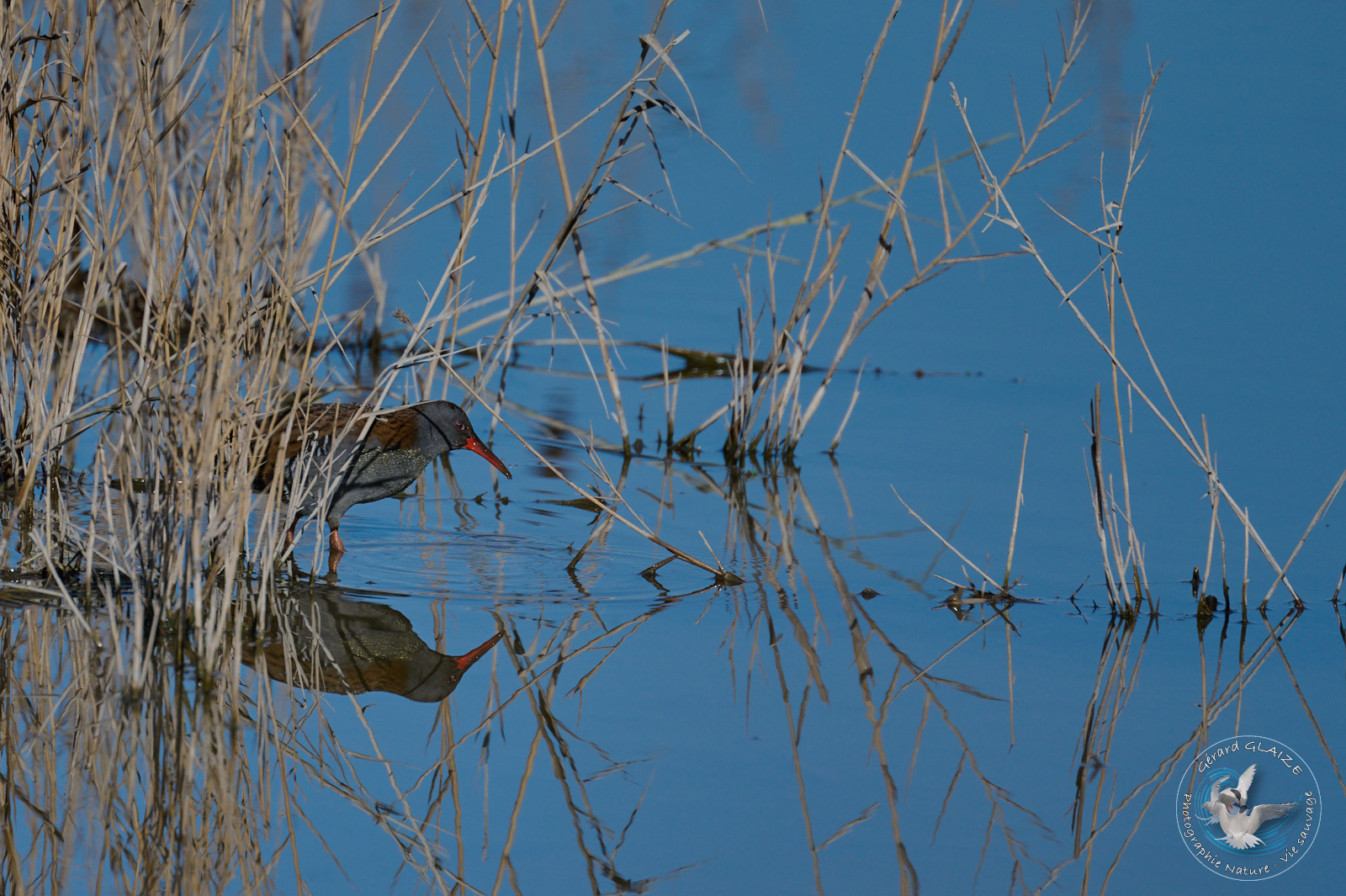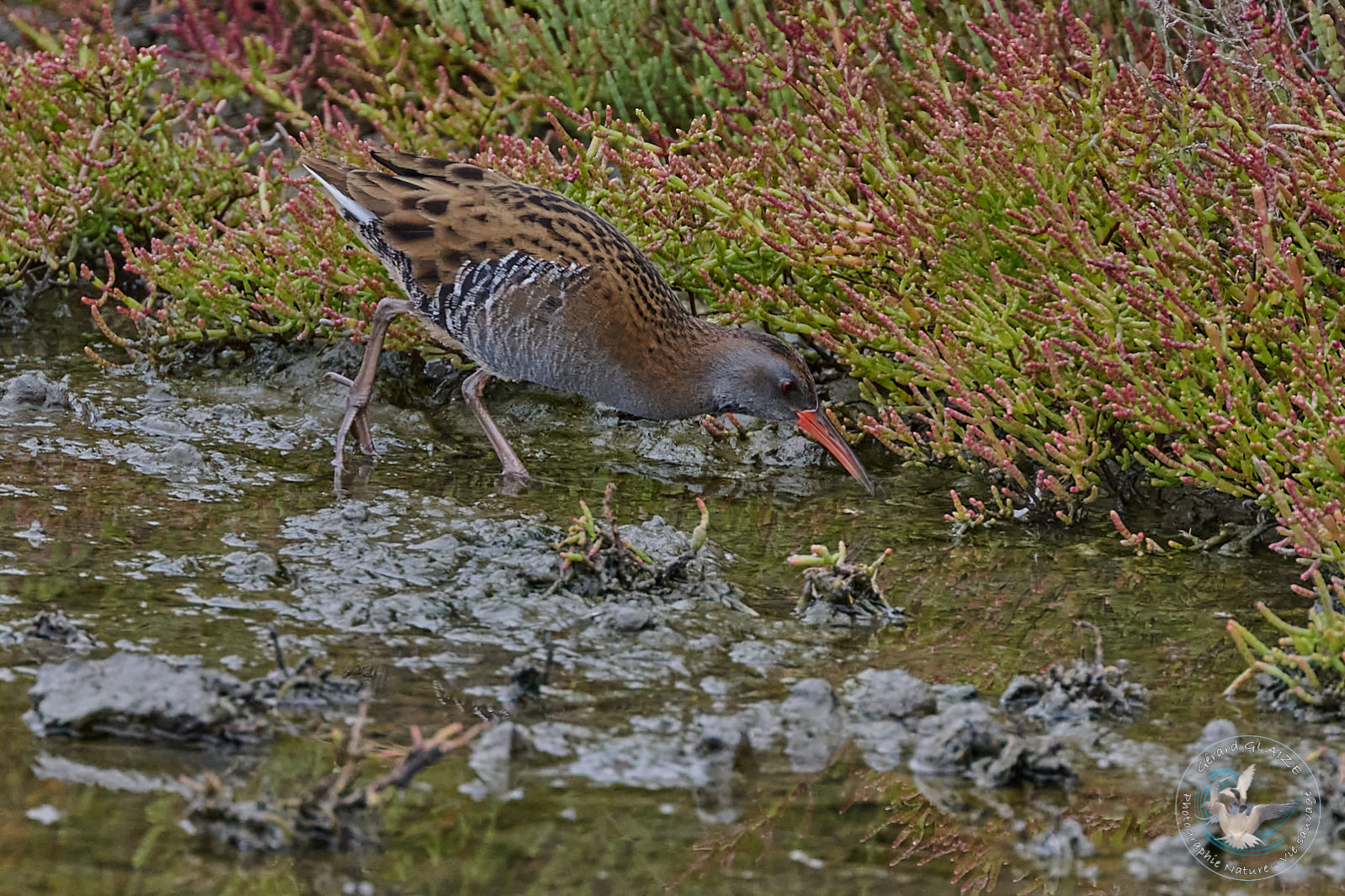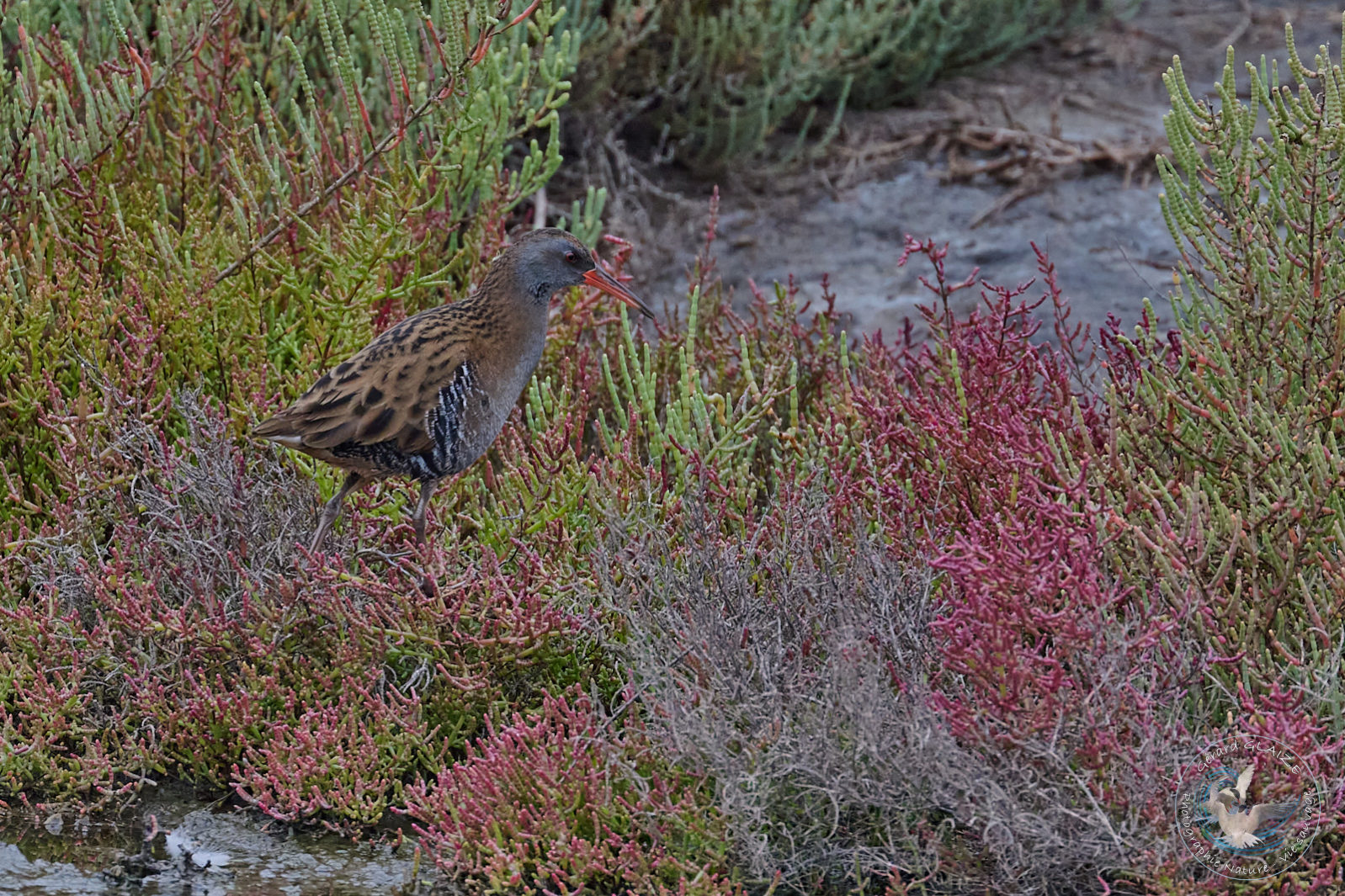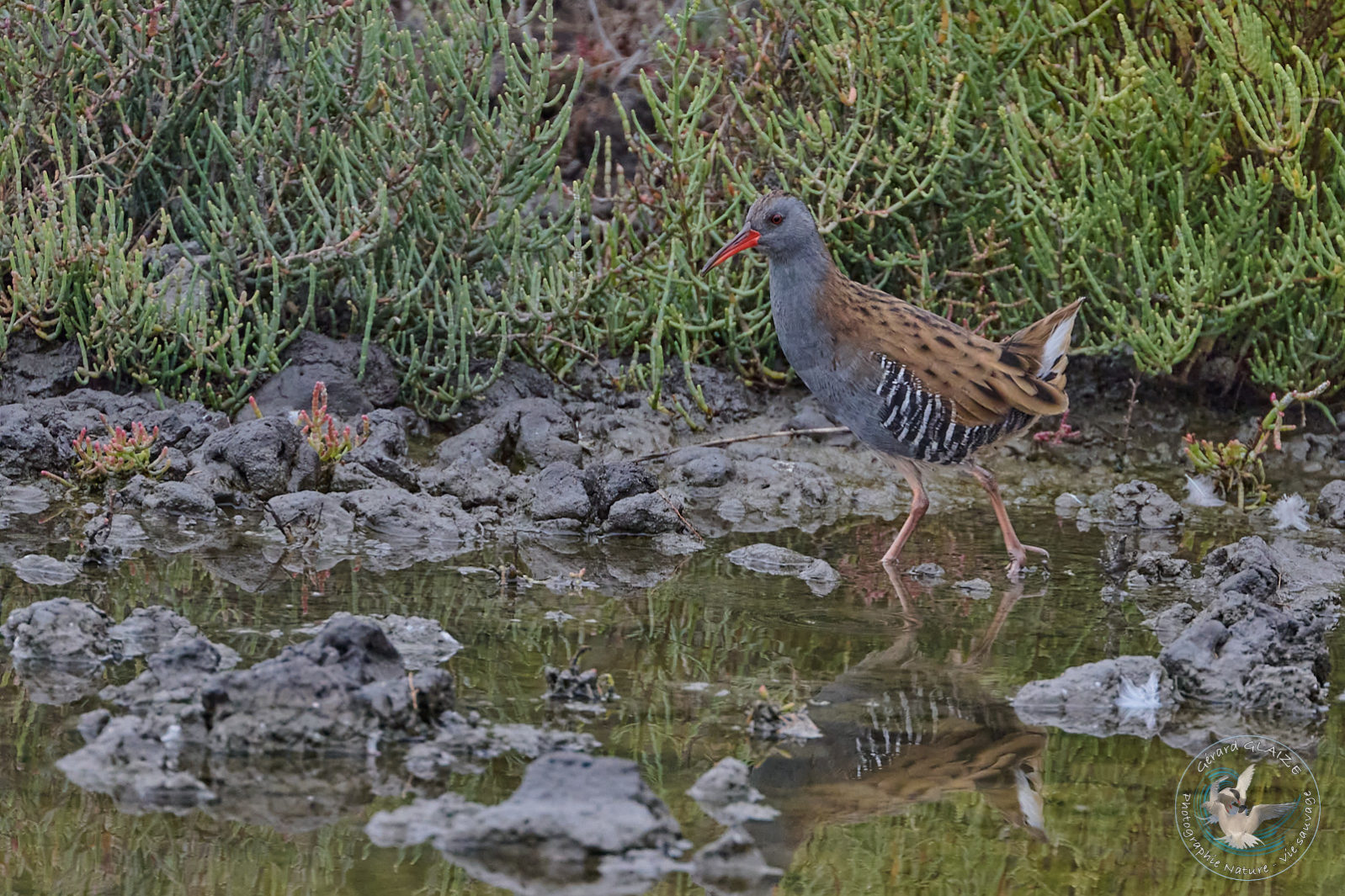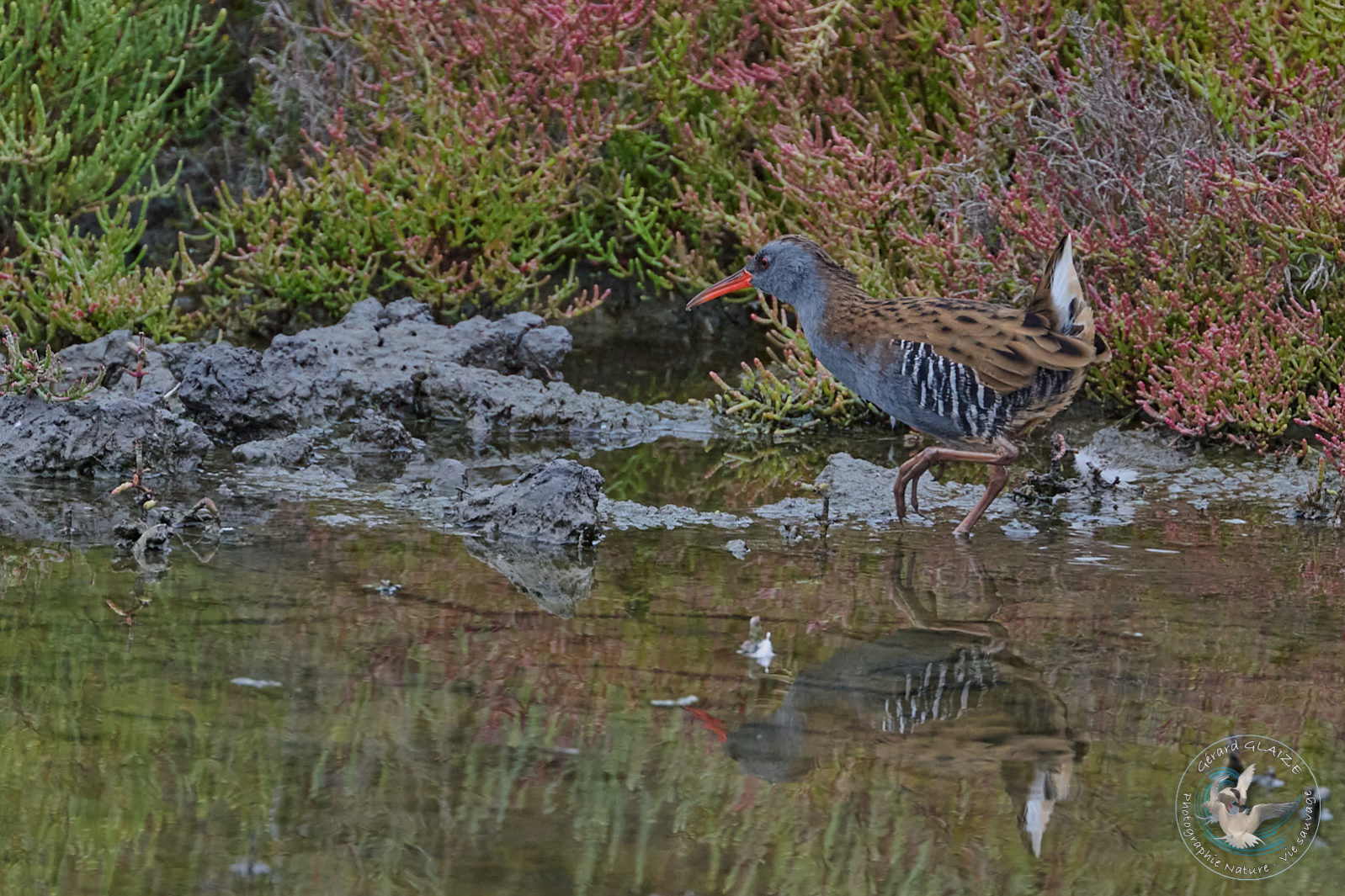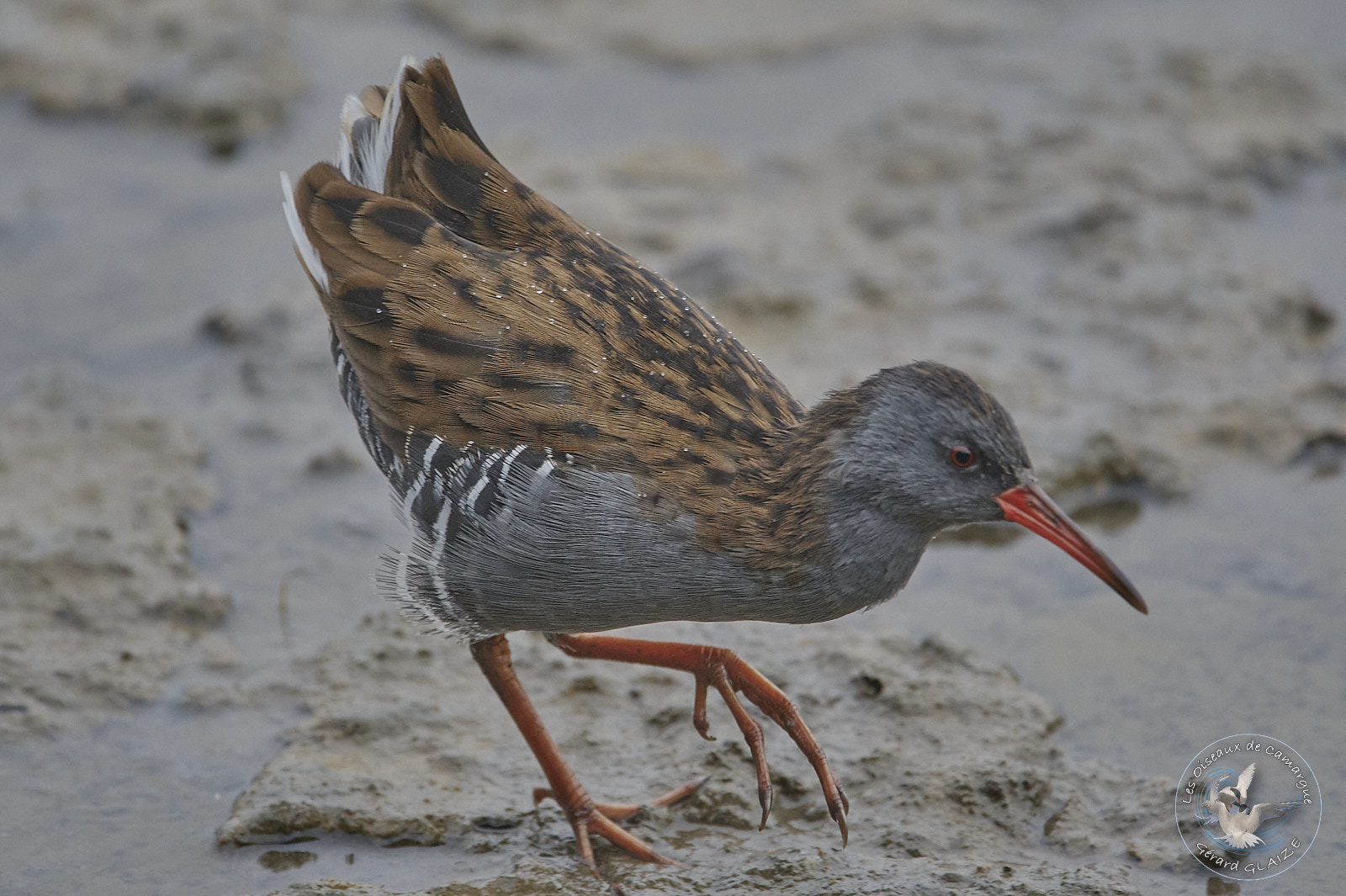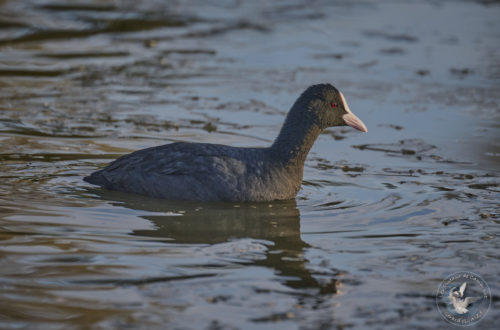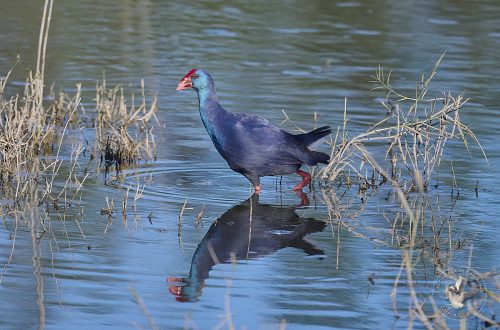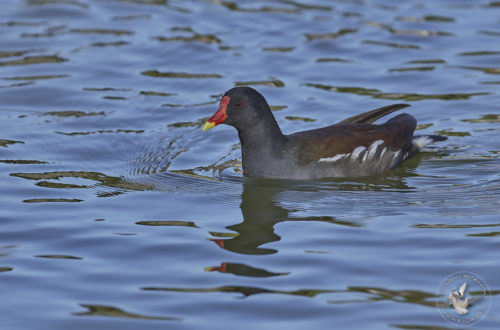Water Rail
The water rail is easily distinguished from other rails and crakes by its long, thin reddish bill. Adults have slate-grey face and underparts. The mantle and wing coverts are brown with regular black patterns. The sides are clearly barred with black and white, the legs are pink. Juveniles look quite similar to adults, however duller and browner above, less gray below.
During the day, the water rail lives hidden in the thick reeds of ponds, marshes and rivers with shallow water, although it can nevertheless be seen at the edge of reed beds.
It is a solitary species, very discreet, rather difficult to observe.
Water Rail
Scientific name : Rallus aquaticus
Family : Rallidae
Length: from 23 cm to 28 cm – Wingspan: from 38 cm to 45 cm
Weight : from 85 gr to 135 gr
IUCN Conservation Status: LC
Flight
It flies little and therefore appears very clumsy, its short wings allowing it only brief movements. During its rapid flight, it has its head and bill lowered and its legs dangling. The water rail, however, prefers to run rather than fly.
Habitat
During the day, the water rail actually lives hidden in the thick reeds of ponds, marshes and rivers with shallow water, although it can sometimes be seen on the edge of reed beds. The habitat it likes the most, however, is undoubtedly the Phragmites reed bed.
Regime – Diet
The Water Rail is omnivorous, it uses its long slender beak to feed. With it, he searches the mud for worms and leeches and breaks the shells of freshwater shrimp, crayfish and insects. It also eats small fish and consumes plant materials such as roots, seeds, berries and sometimes grains.
Nesting
It breeds in wet areas with stagnant water, with tall and dense vegetation, thus including species such as reed. The Water Rail is monogamous and very territorial during reproduction.
The nest is constructed from nearby vegetation available to the bird, and is built primarily by the male, usually in a single day. It is built at least 15 cm above the water level, and can sometimes be built on a pile of roots, a stump or a similar type of support. It can be built higher if the waters start to rise. The nest is approximately 13 to 16 cm in diameter and 7 cm high. This one is well hidden.
The clutch generally includes between 6 and 11 eggs, the two parents alternately incubating the eggs, although the female spends more time there than the male. The eggs hatch after 19 to 22 days of incubation, and the young leave the nest 20 to 30 days later. While one of the two parents incubates, the second goes in search of food and supplies its companion, then the chicks. These are able to search for food on their own after only 5 days. After leaving the nest, the young fend for themselves. They must wait until they are 7 to 9 weeks old to be able to fly. If a predator discovers the nest, the female may move the chicks or eggs to another location. The female carries the eggs in her beak, the adult can carry the young chicks under her wings in case of danger.
Migration
The Water Rail is an occasional migrant. It is a migratory bird in the north and east of its range, but it is found all year round in areas with a more temperate climate such as the Camargue.
Protection
The species remains classified as being of Least Concern on the International Union for Conservation of Nature Red List.
Cry
The Water Rail’s call consists of a series of grunts followed by a “kruîh” squeak reminiscent of that of a piglet, and ends with new grunts. It is used as a warning cry or to warn of its presence in a territory. This song is mainly heard at dawn or dusk.


